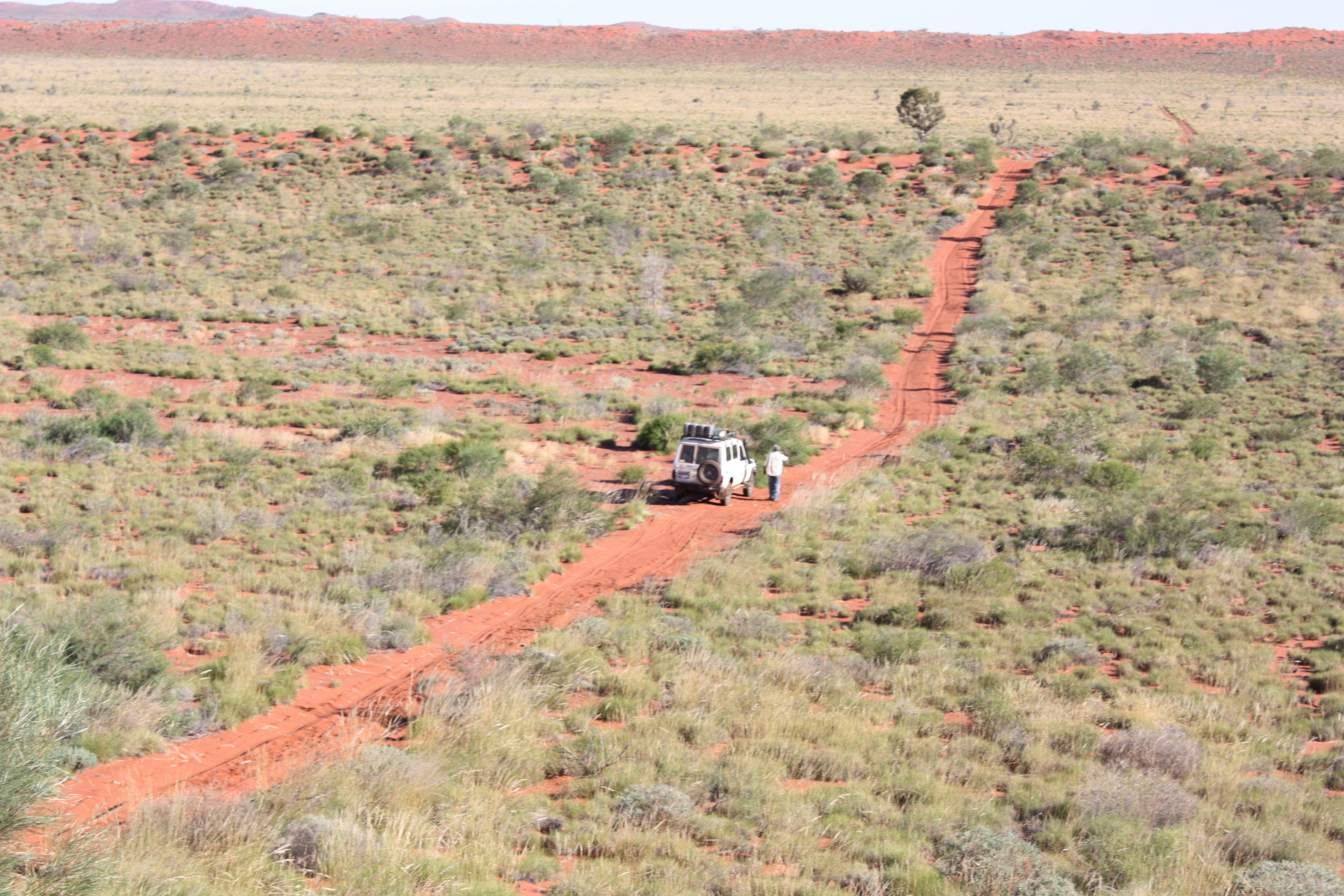Preparing your vehicle
Preparing your vehicle for the Canning Stock Route (CSR) is essential to ensure a safe journey. Remember, you are a long way away from mechanical assistance and if your preparations are not thorough it may result in an expensive rescue and possibly a long wait, as parts may need to be flown into the nearest town. The Australian National Four Wheel Drive Council and George Cottee — who produced Travelling in Outback Australia — identified the following common causes of mechanical breakdown:
broken drive belts
to secure tabs of front plastic grills
cracks in mudguards and failure to secure tabs of front plastic grills
broken roof rack mountings
blown rear wheel seals
front wheel bearings
shock absorbers and mountings
broken rear axle
broken stabilizer rods
cracked / bent wheel rims
broken springs and loose spring hangers
broken coil spring mounting cradles
power steering leaks; and
leaking / binding of the braking system.
NOTE: this is not an exhaustive list. Please prepare yourselves accordingly.
The Australian National Four Wheel Drive Council also suggests having your vehicle thoroughly serviced two weeks before your departure date. The service should include:
get a wheel alignment and complete check of tyre condition and tread
check the cooling system
pressure test, flush and check the radiator
check and tighten all hoses and clamps and replace parts where necessary
conduct an engine oil and filter change, air cleaner, and fuel filter change
conduct a battery condition inspection and if necessary replace a battery
check the air conditioner and re-gas if necessary. Inspect for any leaks
check and test the electrical system; and
adjust and replace brakes, pedals and handbrake if necessary.
The CSR is heavily corrugated in some sections. This can be particularly hard on steering and suspension components, springs, spring hangers, coils, shock absorbers, engine mounts, drive belts/chains, exhaust system, universal joints, linkages, axles, seals, mounting brackets, driving lights and CB aerials.
If your vehicle has any weakness such as clutch, engine mounts etc, please take appropriate spares. There are many items that the Australian National Four Wheel Drive Council recommends taking on a journey in the outback. Download checklist.
Loading your vehicle
Loading your vehicle correctly can reduce the likelihood of an accident and reduce wear and tear on your vehicle. The Australian National 4WD Council suggests drivers do not overload vehicles and / or roof racks or exceed the gross vehicle mass of the vehicle. Overloading your vehicle can nullify your insurance claim in the case of an accident, where overloading contributed to the event.
When packing:
place heavy items closest to the floor and secure them
were possible, only place light items on the roof racks
avoid point loading (e.g. placing jerry cans together)
secure all equipment and luggage
pack food in containers / boxes so they do not rub or rattle – this can cause them to rupture
split your water and fuel requirements over more than one container and ensure containers do not rub against each other; and
do not carry petrol inside your vehicle.
Trailers and heavy vehicles
Trailers and heavy vehicles are not recommended for the Stock Route due to concerns for safety, the environment and track conditions. Part of the attraction of this route is the challenge of driving through such a vast wild natural area. This great experience is being lessened by track and roadside damage caused during attempts to haul trailers and heavy vehicles over the 1000 plus sand dunes. Existing corrugations on the CSR can snap trailer axles which render them immobile. Not only does this cause angst for the owners but potential expensive recovery costs or worse, wrecks being left to rust on the CSR.
There currently is a trailer ban on the southern part of the CSR which runs through Cunyu Pastoral Lease. Camper trailers have previously been stuck across one particular creek crossing and for this reason Cunyu Station specifically insists that no camper trailers transverse their property. You will be turned back. You will need to check with the other pastoral managers also if you wish to access these properties. Feedback from other travellers will be monitored for future decisions on these types of vehicles.



